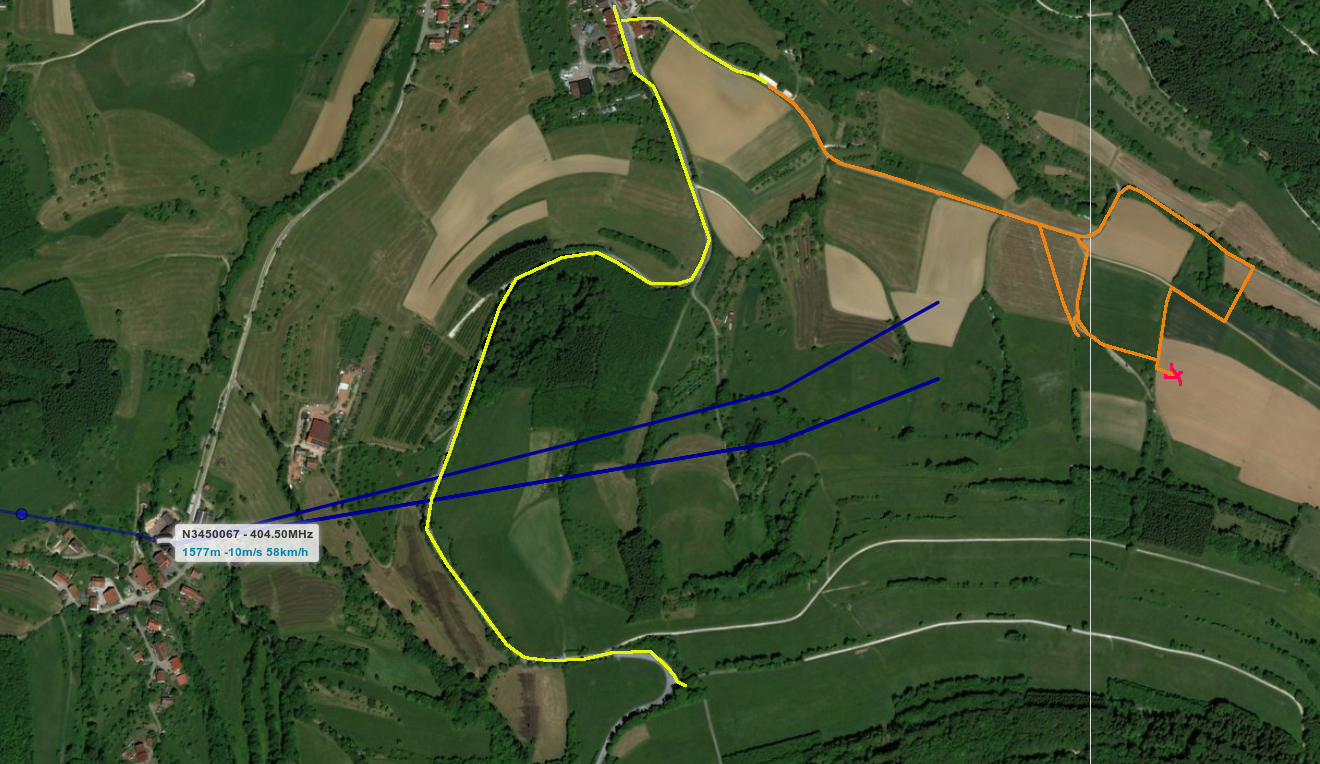The Chase
The dominating inversion in and around Stuttgart had reduced the wind speed over the last couple of days so that the weather probes launched in Stuttgart would also come down close by. On the weekend, the wind had freshened up. The prediction for Sunday still looked promising, and placed the landing zone near Geislingen which is about 50 km South East of Stuttgart near the autobahn A8.
As the burst altitude of the Stuttgart probe is not very consistent I computed the landing locations starting from a burst altitude of 26 km up to 35 km. We decided to wait somewhere in middle assuming a burst altitude of 30km. This brought us to Donzdorf. From my flight training I knew the narrow landing strip of Donzdorf. It is on a plateau overlooking the area — an elevated position ideal for tracking a probe.
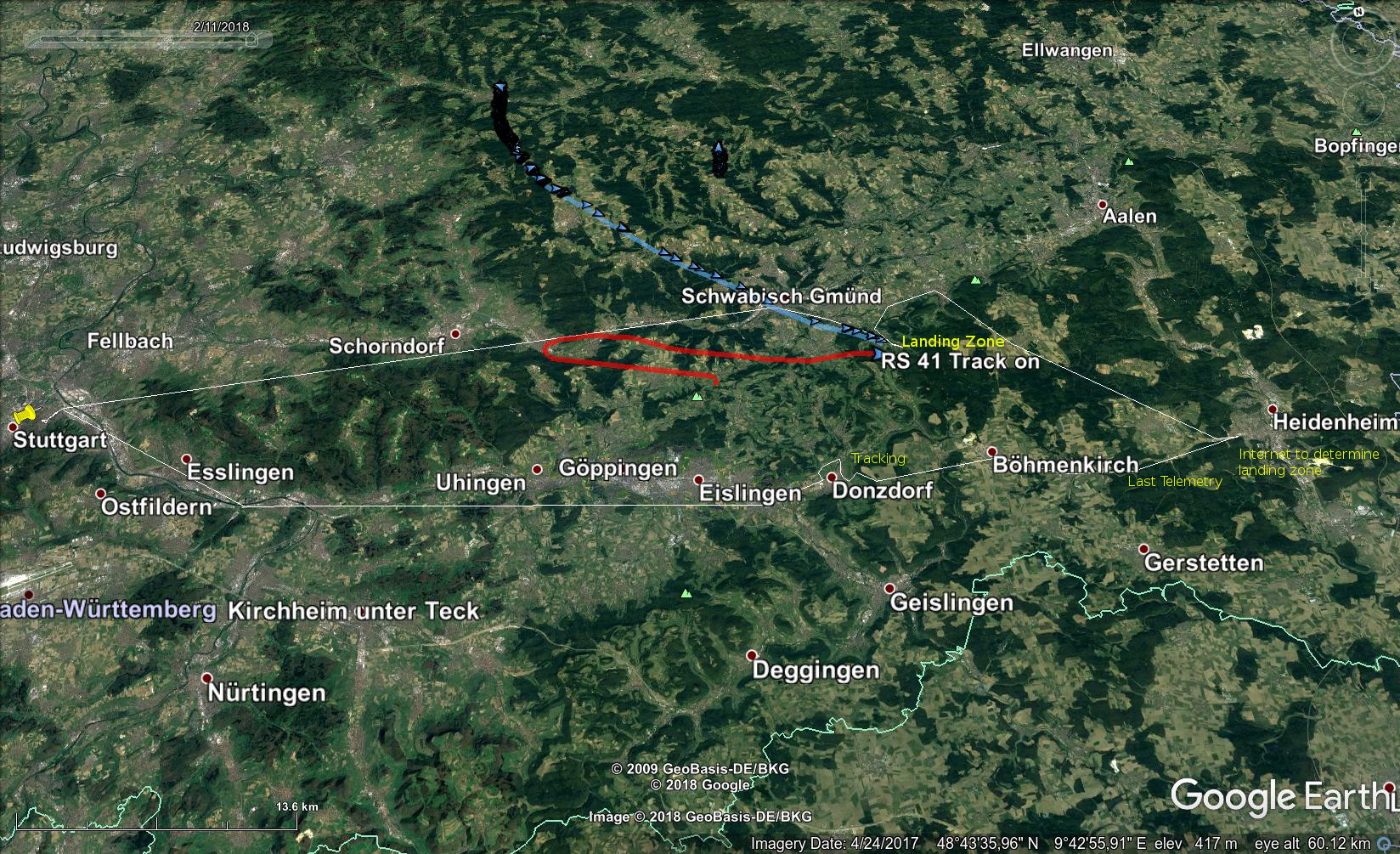
Once we arrived at Donzdorf, we made the receiver ready and started tracking. While we watched the probe ascending, we enjoyed a pizza lunch. Then, the mouse pad of my computer started to developed a live of its own opening and closing windows. I grew increasingly frustrated and eventually rebooted the computer. Once we were back tracking we realized that now the probe was on its way down. The balloon had bursted in around 26 km altitude. I ran another prediction. As the internet connection was slow, it took a while until the result came back: The landing zone was estimate to be around Heidenheim.
On the way to Heidenheim, we occasionally received more telemetry. Once the probe was down to about 3000m, I pulled over, trained the antenna to the probe, and tried to get the last telemetry data as low as possible.
[ 7514] (N3450067) So 2018-02-11 12:25:04.000 lat: 48.75711 lon: 9.86724 alt: 1678.23 vH: 14.7 D: 99.3° vV: -8.5 # [00000]
[ 7526] (N3450067) So 2018-02-11 12:25:16.000 lat: 48.75677 lon: 9.86971 alt: 1568.07 vH: 17.0 D: 103.7° vV: -8.0 # [00000]
About 1600 m. Pretty high — not good. Hopefully we would be able to receive the probe on the ground once we arrived in the landing zone. Talking about gps fixes — there was no internet available, so we had a gps fix but no village name to enter in the route planner. So we continued to Heidenheim. Here we figured out that the probe was last seen near Weiler in den Bergen — a destination the route planner did not know. I could not blame it for that — I had not heard about the village either. But the nearby village of Bargau the route planner knew.
So on to the landing zone. About 1 hour after the probe had gone down, we arrived. No signal. Not good. We cruised a little bit around, stopping a couple of times trying to reacquire the signal. Nothing. Felix did not look happy. I then decided to go near to where the predictor put the landing point of the probe based on the last received transmission. This brought as to the entry of an area not to be accessed by cars for environmental reasons. Also here no signal. Felix was a disappointed but a agreed to leave the car for a little afternoon walk.
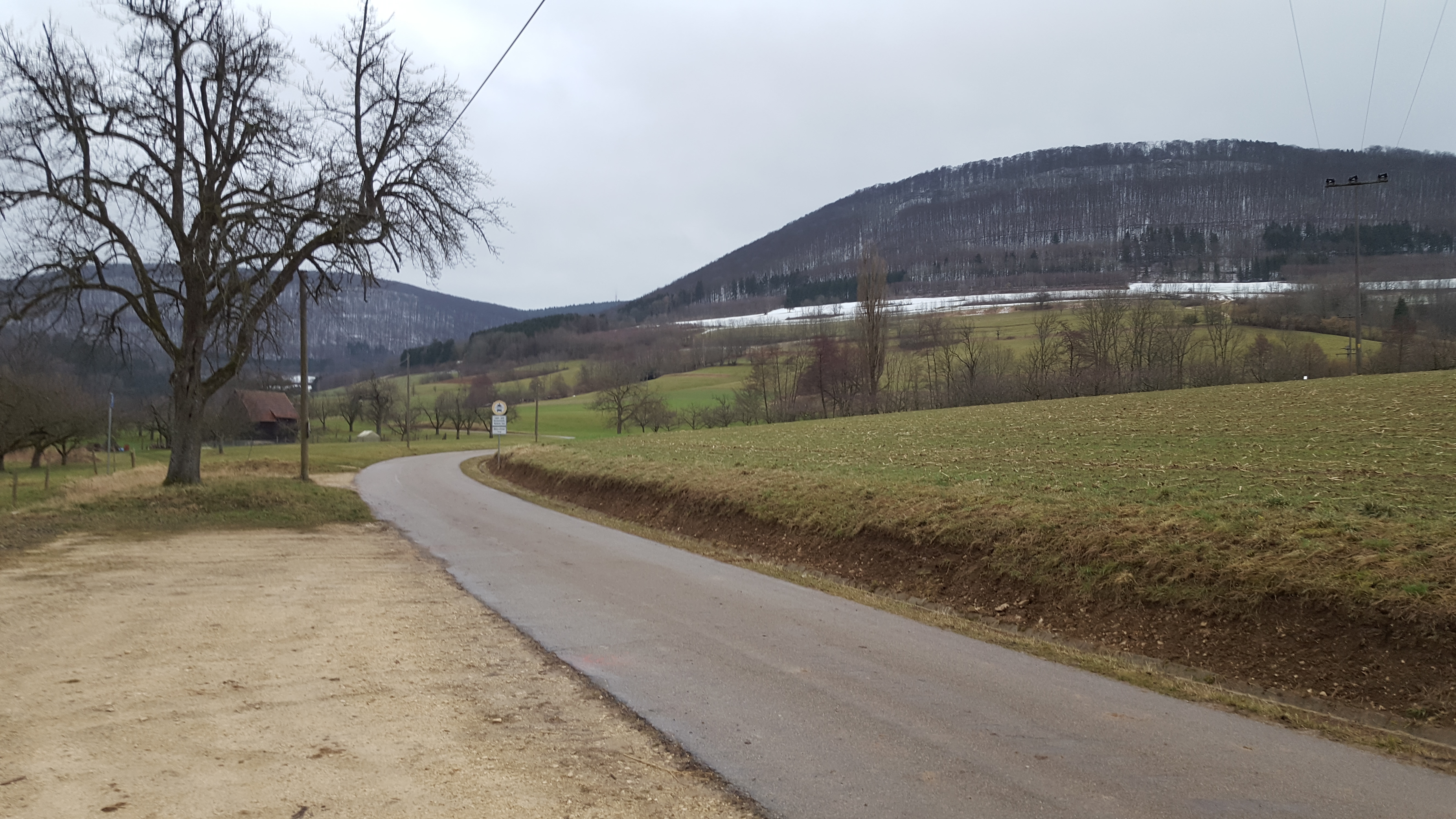
Without much hope, we wandered around looking for white dots in the landscape. The probe could be anywhere as the prediction is normally not that accurate. But soon, we had spotted a white object. And it had about the right size.
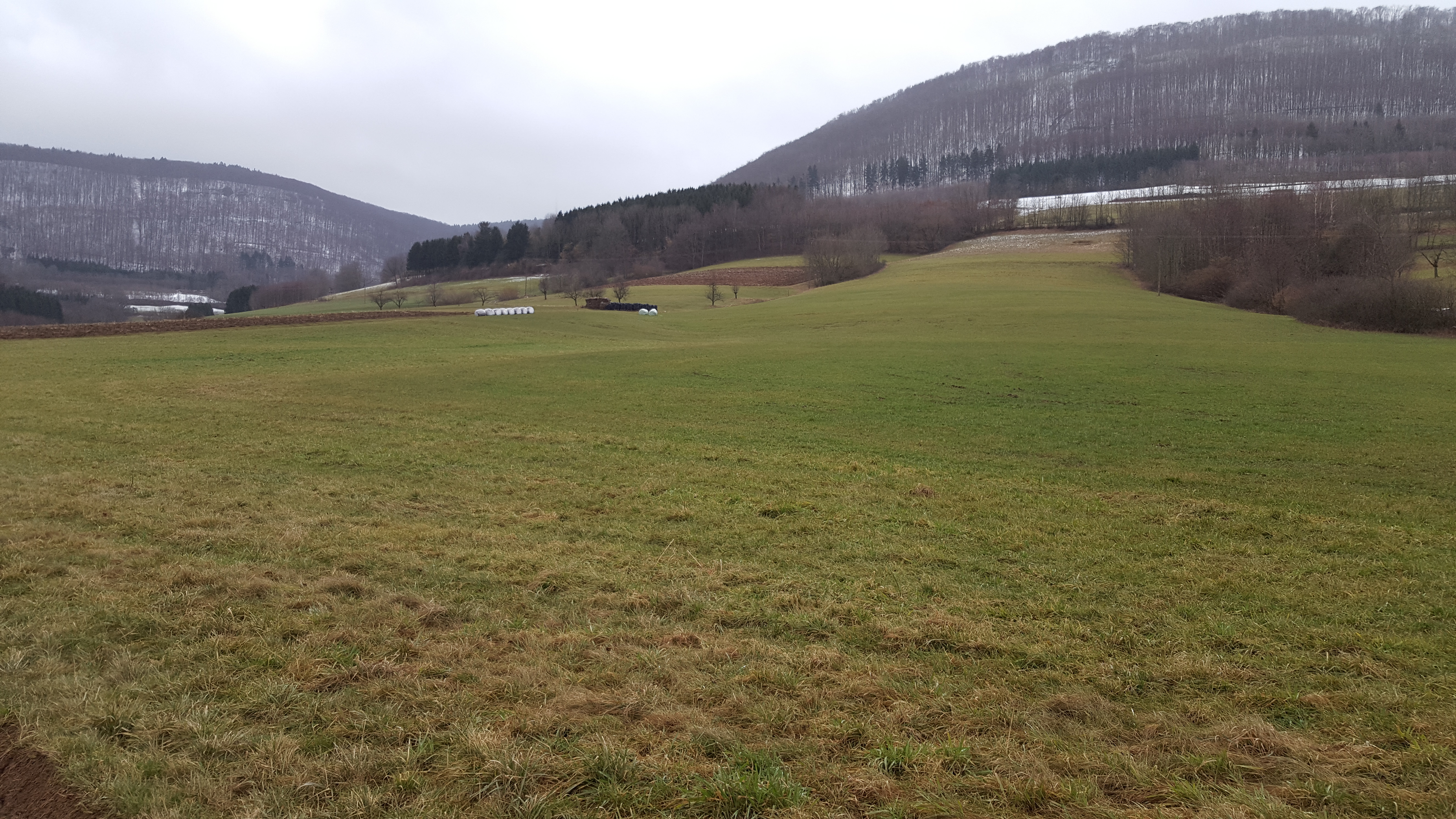
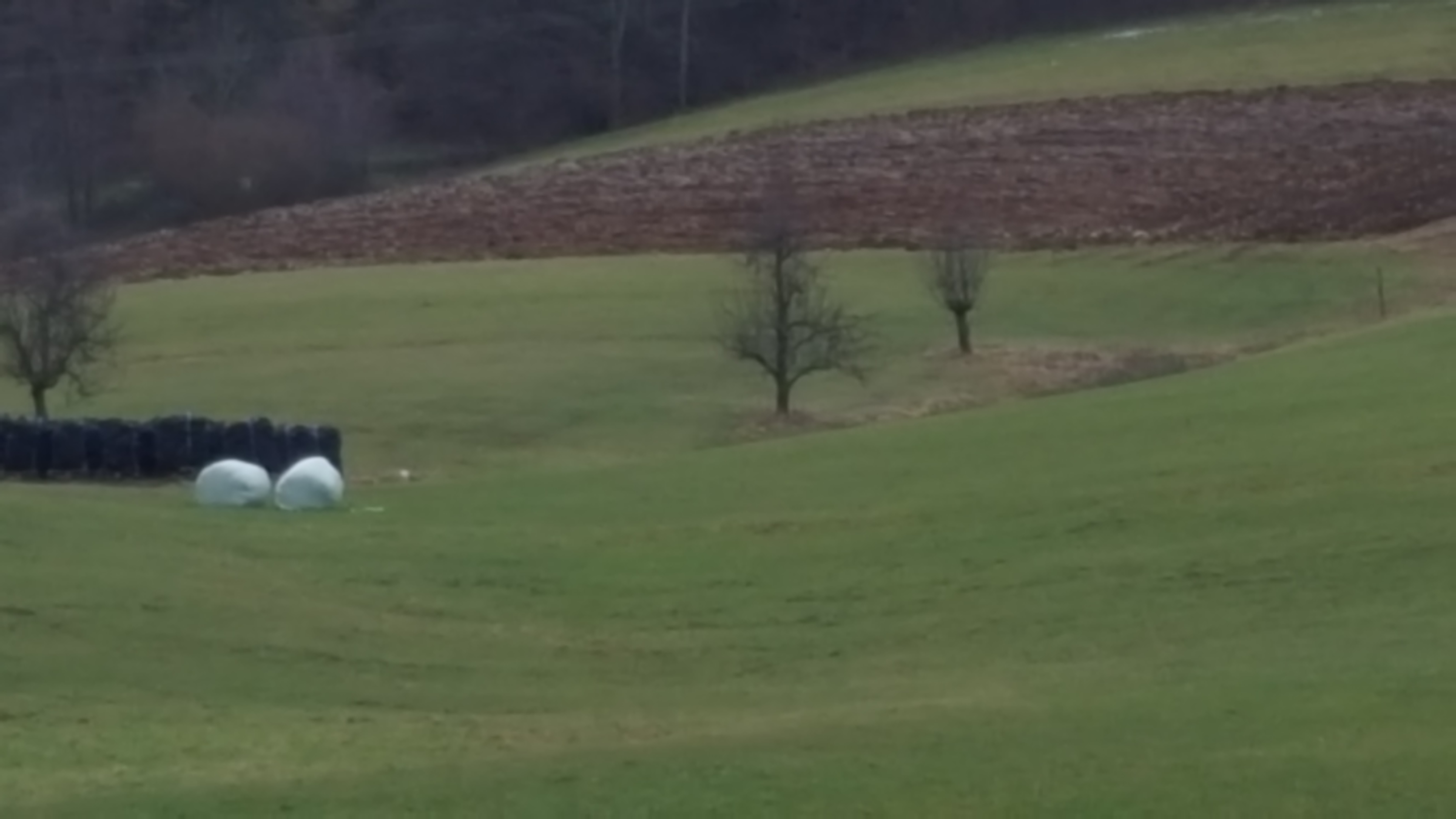
As we came closer, we realized that all we had found a white stone. Not bad — but not what we were looking for.
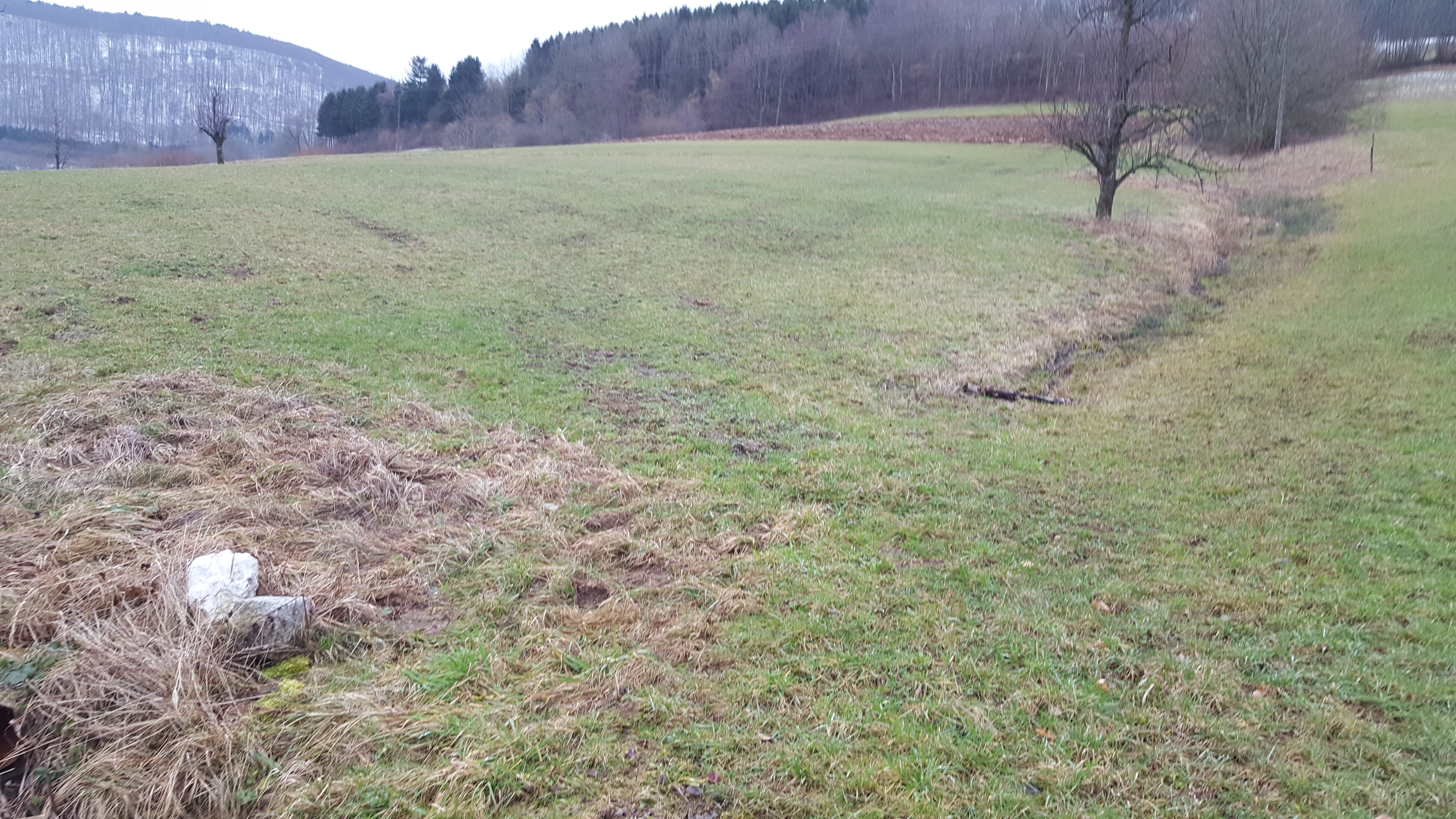
So we went on. We crossed a bridge. Then Felix spotted a white patch on a field. A little bit to big for a probe or a parachute. Probably a plastic bag. But since we were already in the area, why not checking it out? We crossed a creek, and went up the hill. It looked like a plastic sheet — not a probe. But wait. What was that white thread curling away from the white sheet? Should we have found the probe? I stepped into the mud to check it out. In the meanwhile Felix had located the probe in a furrow. Felix beamed with pride and joy. With determination, perseverance, and luck Felix had finally found his probe.
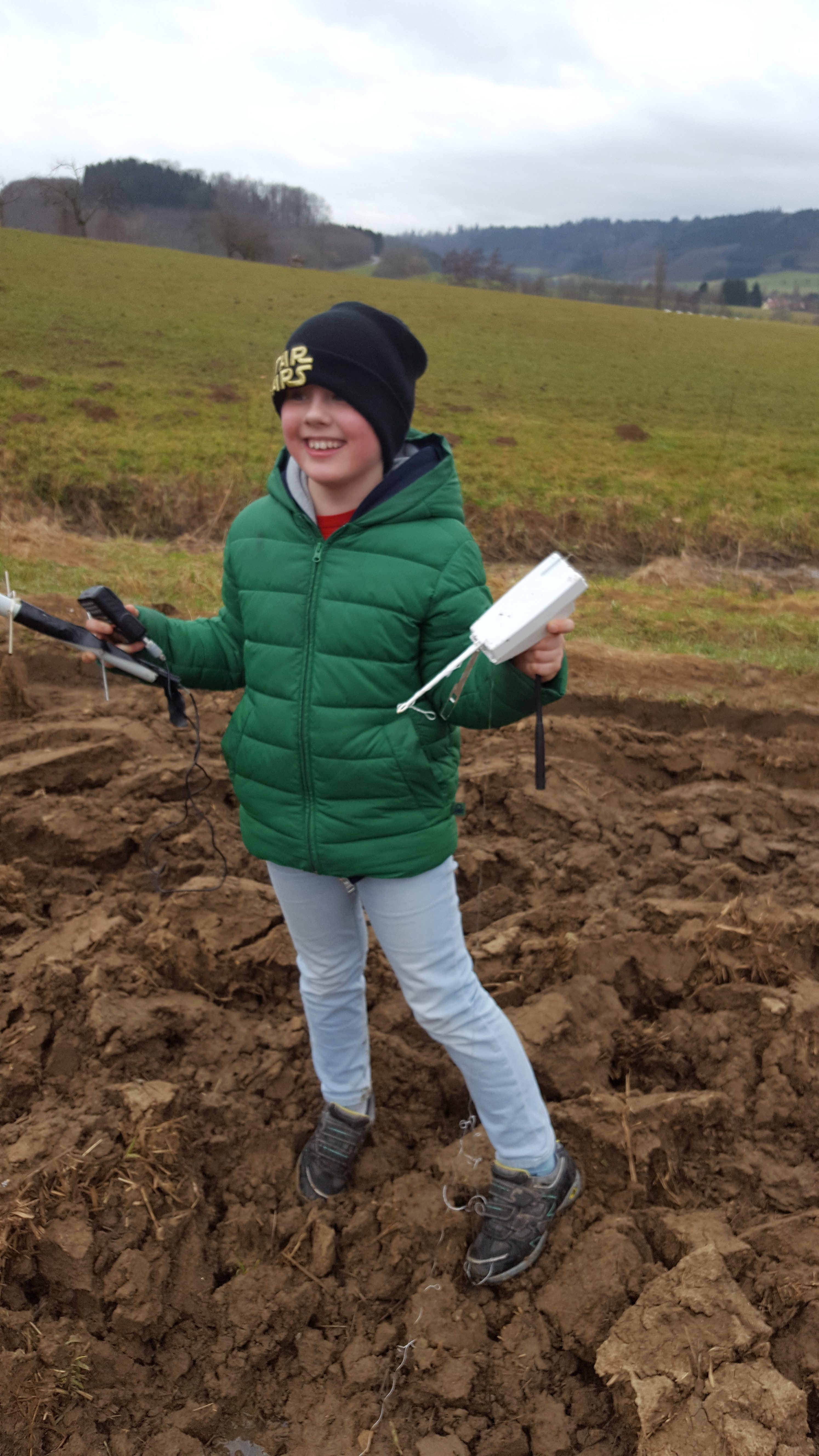
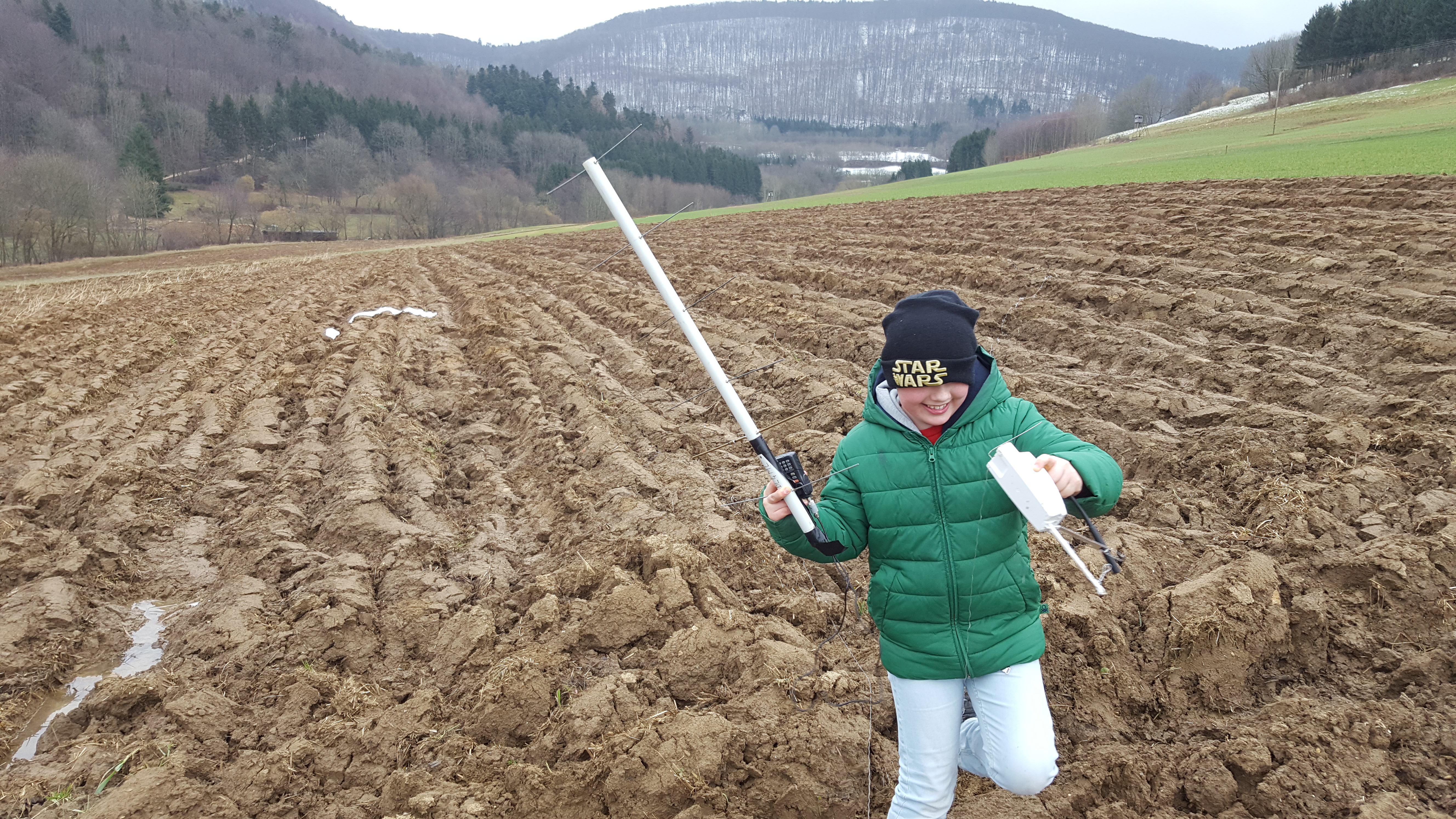
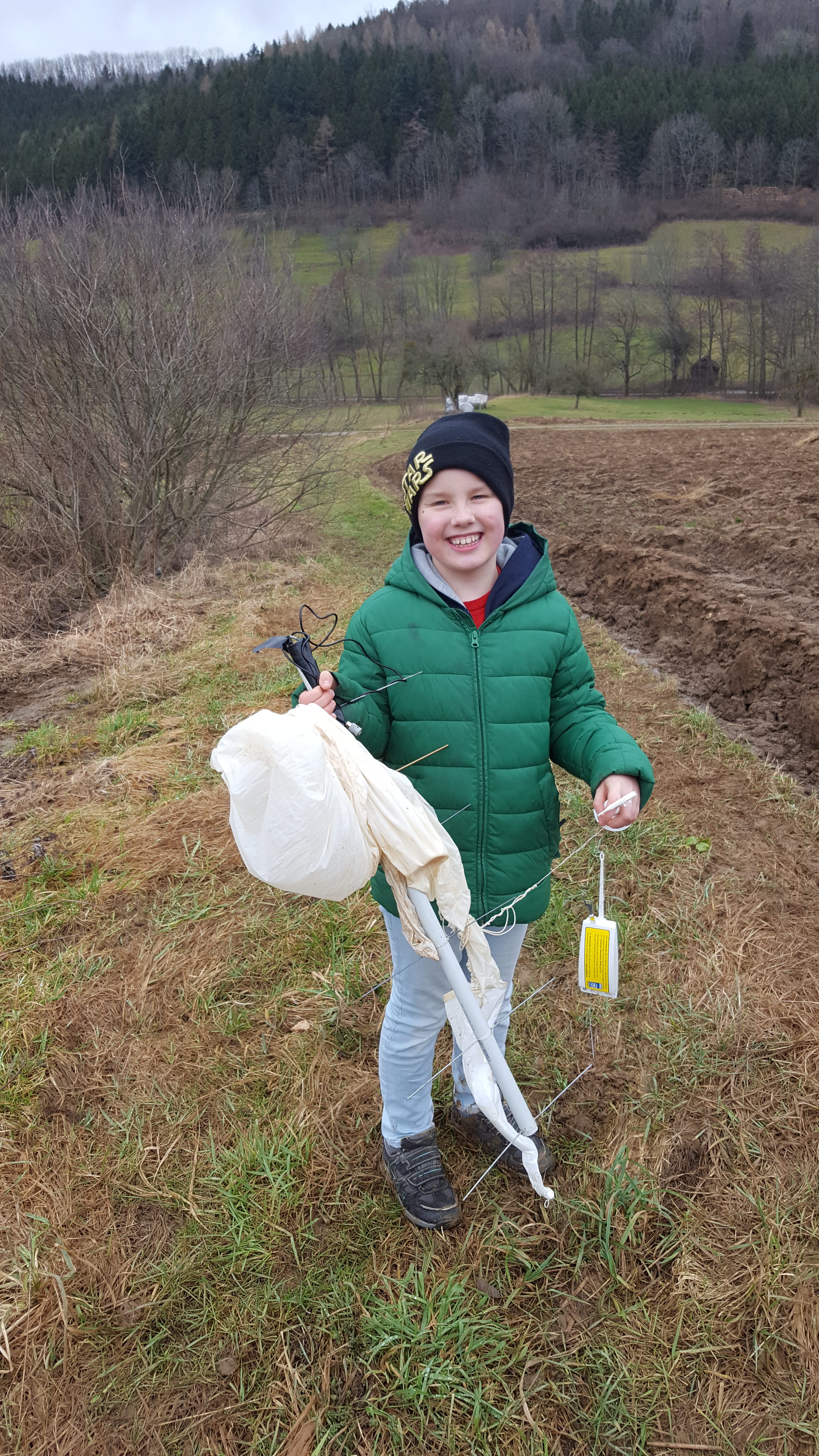
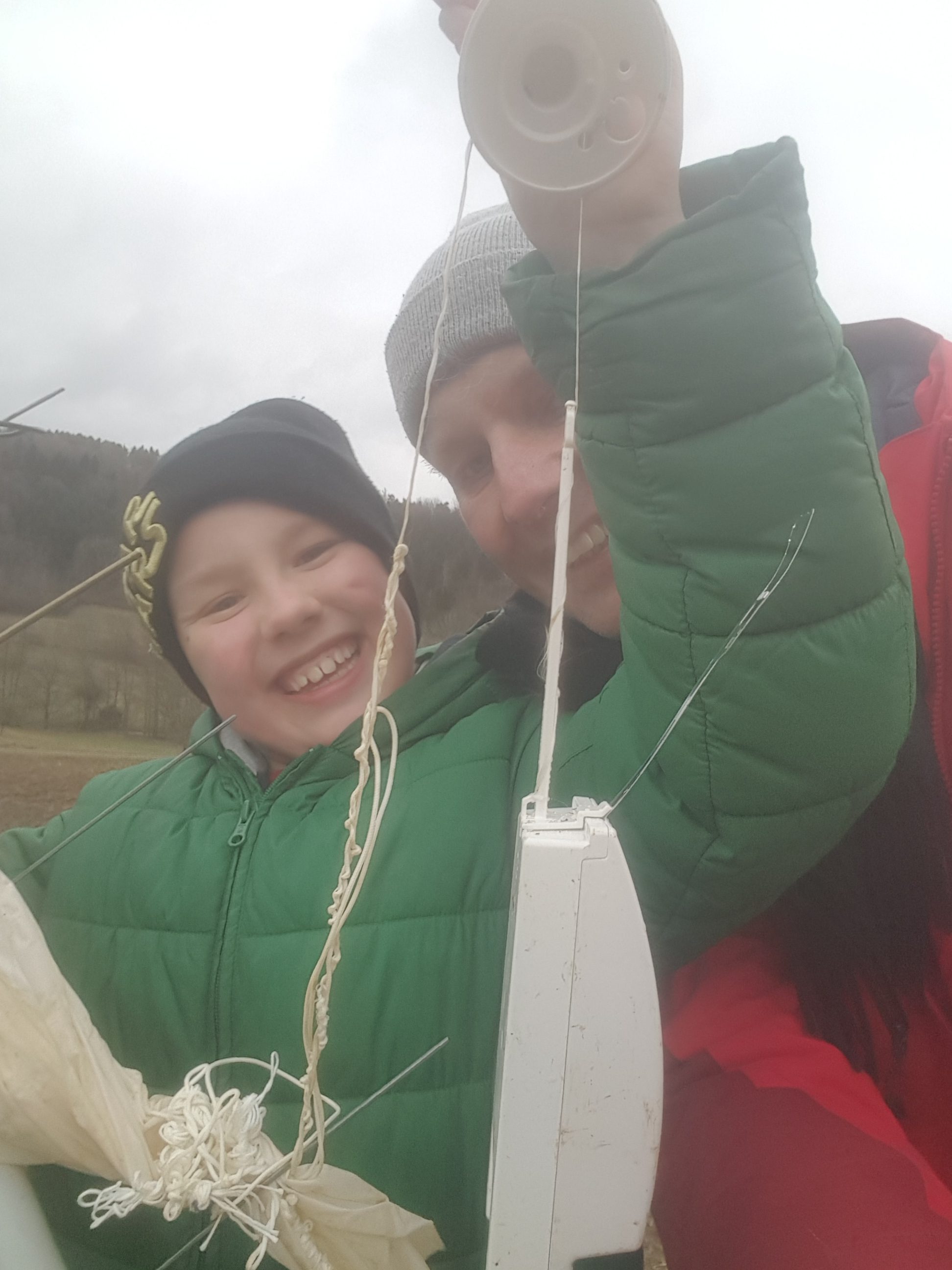
I then started the lengthy business of winding up the thread and recovering the probe. This was complex as the tread had entangled the parachute and prevented it from opening. Then we walked back to the car and drove home to Stuttgart.
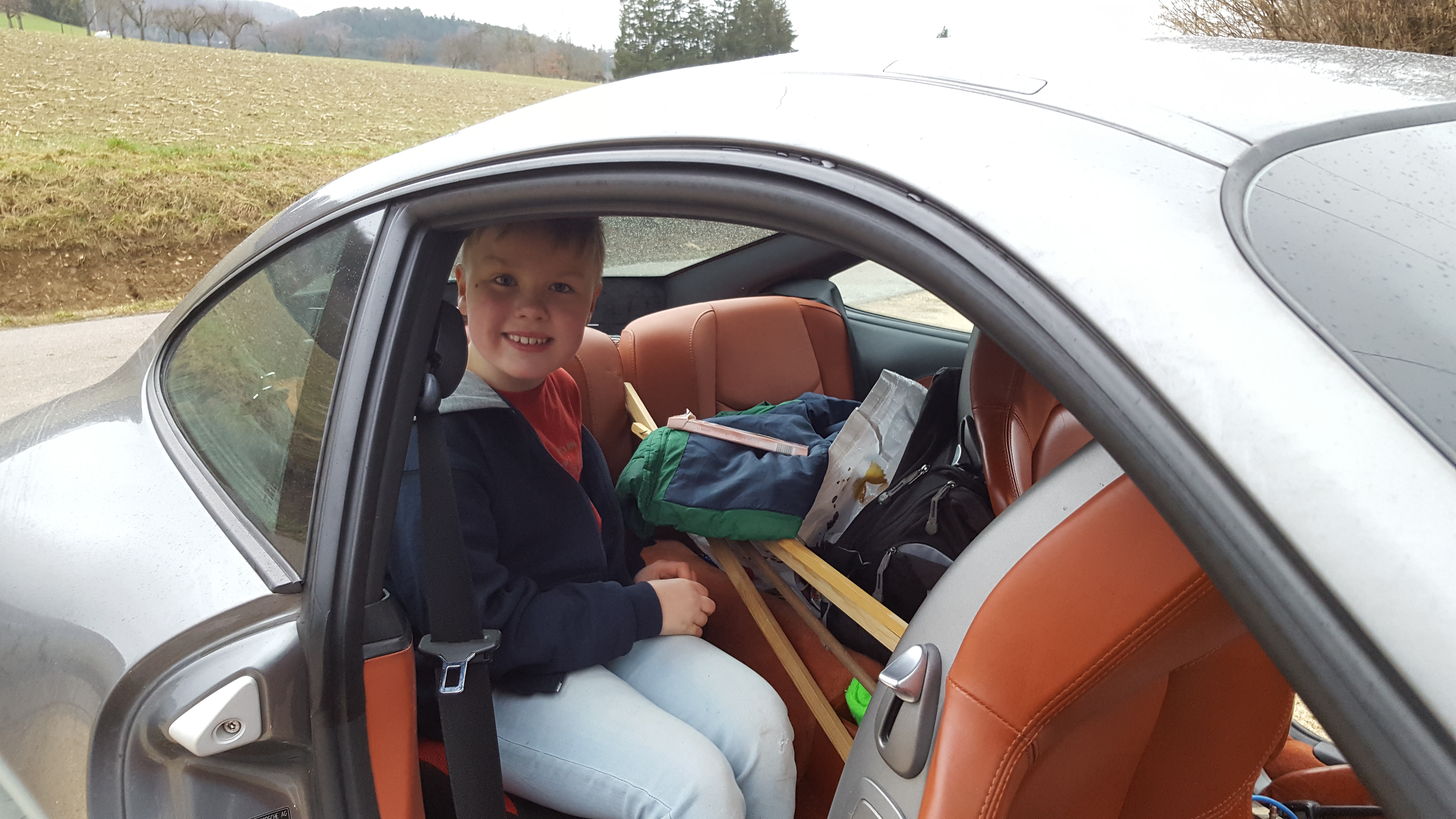
Post Flight Analysis
So we did the probe not continue to sent when it was on the ground? The batteries are normally good for more than 4 hours. The parachute had not opened and looking at the vertical speed, the probe had impacted the ground with around 10m/s or 36 km/h. The resulting acceleration probably had caused the batteries shortly to loose contact. When repowered, the RS41 does not automatically comes back online but goes into a standby mode. At home, I disassembled the probe to check the batteries. They were in good shape. After reinserting them, I pressed the “on”-button — and there the signal was.
